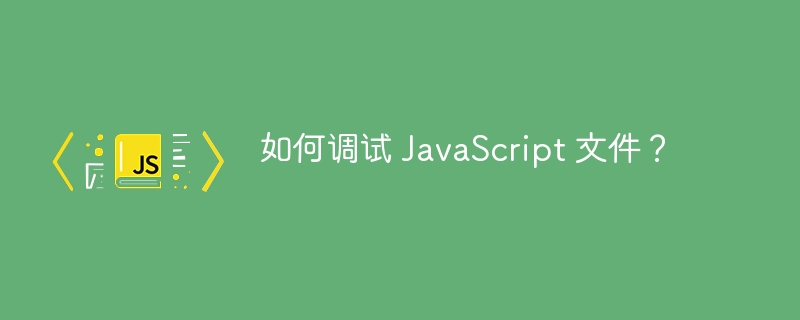

JavaScript is a widely used programming language for creating interactive and dynamic web applications. However, like any other programming language, JavaScript code can contain bugs that can cause unexpected behavior or errors. Debugging is the process of identifying and fixing these problems. In this article, we'll explore different ways to debug JavaScript files.
The simplest and most commonly used debugging technique is the console.log() method. By inserting console.log() statements at key points in your code, you can output specific values and trace the flow of execution.
console.log(value1, value2, ..., valueN);
Here, the console.log() method takes one or more values as parameters and prints them to the browser's console. It is typically used for debugging purposes, allowing you to inspect variable values and trace the flow of execution in JavaScript code.
In the example below, we have a function called calculateArea() which calculates the area of a circle based on a given radius. We use the console.log() statement to print messages and calculated areas to the browser's console.
function calculateArea(radius) {
console.log('Calculating area...');
const area = Math.PI * radius * radius;
console.log('Area:', area);
return area;
}
calculateArea(5);
Calculating area... Area: 78.53981633974483
Modern browsers are equipped with powerful development tools that allow you to set breakpoints in JavaScript code. Breakpoints pause code execution at specific lines, allowing you to inspect variables, step through code, and identify problems.
debugger;
Here, the debugger statement is a built-in JavaScript statement that can be inserted into the code to set breakpoints. When code execution encounters a debugger statement, it pauses so you can inspect variables, step through code, and identify and fix problems.
In the example below, we have a greet() function that takes a name as a parameter and returns a greeting message. We use debugger statements to set breakpoints in the code. When you open your browser's developer tools and run this code, execution will pause at the debugger statement. You can now inspect the value of the name, execute the code line by line, and observe the flow of execution.
function greet(name) {
const greeting = `Hello, ${name}!`;
debugger;
return greeting;
}
const message = greet('John');
console.log(message);
Hello John
The try...catch statement is particularly useful when you expect some code to throw an error and want to handle it efficiently. By wrapping suspicious blocks of code with try blocks and catching errors with catch blocks, you can get more information about the error and take appropriate action.
try {
// Suspicious code block
} catch (error) {
// Error handling code
}
Here, the try...catch statement is used to catch and handle errors in JavaScript. The code inside the try block is executed, and if an error occurs, it is caught by the catch block.
In this example, we have a divideNumbers() function to divide two numbers. We check if the divisor b is zero and throw a custom error using the throw statement. The catch block catches the error and logs the corresponding message to the console.
function divideNumbers(a, b) {
try {
if (b === 0) {
throw new Error('Division by zero!');
}
const result = a / b;
console.log('Result:', result);
return result;
} catch (error) {
console.error('An error occurred:', error);
}
}
divideNumbers(10, 0);
An error occurred: Error: Division by zero!
In this article, we discussed how to debug javascript files using different methods of handling errors. You can effectively identify and fix errors in your code by using methods such as console.log(), breakpoints, and try...catch statements. The console.log() method helps you inspect variable values and control flow, while breakpoints allow you to step through code and inspect variables in real time. The try...catch statement is useful for handling expected errors and providing appropriate feedback.
The above is the detailed content of How to debug JavaScript files?. For more information, please follow other related articles on the PHP Chinese website!




